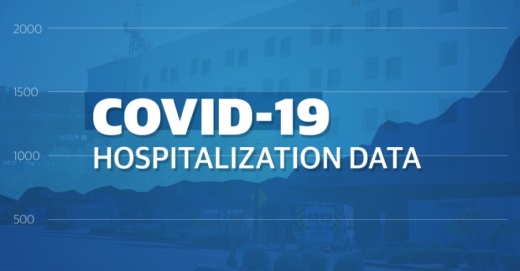“We’re going to surge. We’re going to exceed capacity. The question is, 'How much we will exceed capacity, and can we blunt the curve through our actions now?'” Escott told Travis County commissioners at a Jan. 5 meeting.
The Texas Department of State Health Services designates a trauma region as being under “surge” status once 15% of its hospital beds have been occupied by coronavirus patients for at least seven days. Travis County’s trauma region is currently considered a pre-surge area; it meets the 15% threshold, but not the seven-day threshold, Escott said.
As of Jan. 5, the 483 ICU beds staffed by health care systems Ascension Seton, Baylor Scott & White Health and St. David’s HealthCare in the Austin area are 88% occupied, according to a news release. The hospitals’ 2,473 total available beds are 79% occupied. APH reports that 156 ICU beds in the area are currently occupied by COVID-19 patients.
Escott’s forecast comes the day after Austin Public Health reported a seven-day moving average of 76.6 daily hospital admissions, an all-time high and a 140% increase month over month from Dec. 4.
That trend is continuing: Escott said 115 new individuals were admitted to hospitals in the Austin area due to COVID-19 on Jan. 4, a number that "far exceeds" any previous single day of admissions.
“The data that we have so far for today indicates that we will likely break a new record today, and I expect that we'll make many new records over the coming two weeks,” he said.
Concern over rising cases and hospitalizations should remain high, Escott said, even as APH and local hospitals and pharmacies throughout the community continue vaccine distribution efforts. Demand exceeds supply for the county’s limited supply. 42,000 doses have been disbursed by the state to local providers so far.
Although the DSHS has given the green light to expand vaccine administration beyond health care workers and nursing home residents to include people over 65 or with qualifying health conditions, most providers in Travis County are still distributing to only the highest-priority recipients, APH Director Stephanie Hayden said.
“APH is rapidly distributing vaccine to individuals who meet the state’s definition of Phase 1A. However, the small allocation does not allow us to offer vaccine to Phase 1B individuals at this time,” Hayden said. “We also understand from conversations with other providers that the demand for vaccine in Phase 1B is far exceeding the supply of many providers across the Austin-Travis County area, who are also still focused on Phase 1A.”
As local providers gradually receive more doses in the coming months and expand access to broader sections of the community, Escott said he expects DSHS to produce local dashboards to help people find the vaccine as it becomes available. In the meantime, he said, Travis County residents need to adjust their expectations: Vaccines may be slow in coming, and masks and social distancing will remain important.
“We’ve got to have it in our minds that we’ve got at least another six months of masking and distancing,” he said.
That guidance is especially important after the holiday season, which Escott said has already resulted in increased case counts.
Escott urged caution particularly for local schools systems, parents and students. For the first two weeks of the new semester, he recommended parents who are able to keep their children quarantined at home while participating in virtual learning, especially if they have traveled or gathered over the holidays. He also strongly recommended schools suspend or postpone extracurricular activities where masking is not possible, including athletics.





